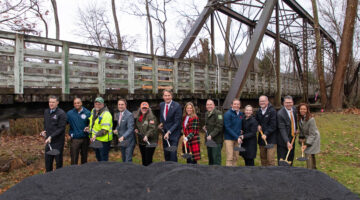Landfills have reached a tipping point.
In 2018, a major landfill in Atlanta, GA, destabilized due to an imbalance of solid, bulky waste and liquid biosolid waste, resulting in a collapse. The incident was one of multiple slope failures that have occurred at Georgia landfills in recent years as high population growth and a disproportionate mix of wet and solid waste accumulated in landfills from metro areas. In response to those failures, the state adopted regulations limiting the volume of biosolids that wastewater treatment facilities can send to landfills.
Further north in Maine, what was once deemed a sustainable venture to use biosolid compost in farmlands has since been found to contain PFAS – a highly toxic “forever chemical” – forcing regulation to send biosolids to landfills to protect the health of Maine’s residents. This action invariably causes a significant rise in disposal costs in the community; in the southeastern U.S., landfilling costs could double or triple, based on the recent “Biosolids Assessment and Prepared Study,” for the Georgia Environmental Finance Authority.
Local treatment facilities are disposing of more biosolids than the landfills can handle, putting landfills on pace to run out of capacity within five years.
Both Maine and Georgia represent a critical point that is reaching municipalities across the U.S. That is, rising disposal costs and health issues that are causing local and national governments to regulate how biosolid waste is treated, leaving landfills caught in the crosshairs.
Acting now versus later
It may seem more feasible for owners and municipalities to wait until absolutely necessary to address the issue of their landfills, but a proactive approach may prevent escalating challenges. In waiting, there comes a risk of:
-
- Little to no time to prepare. If regulations force the issue, municipalities will have to shift to a reactive response instead of allowing them to stay ahead of the problem.
- Limited resources. Regulation plus limited equipment and available workers can create a bottleneck in construction availability that will leave many facilities in a tight spot to add on the needed infrastructure for their systems.
- Rising costs. As resources get squeezed, those that must wait may face out-of-compliance fees and additional costs that continue the strain.
Early action could offer advantages such as:
-
- Ample time to plan. Having more time may allow for appropriate committees to methodically determine the best approach and solution to address potential rules and regulations.
- Savings may come sooner. Communities could see a reduction in disposal costs as soon as new solutions are put in place.
- Better positioning for new technologies. Although not yet developed, federal researchers are evaluating technologies for removing toxic PFAS chemicals. Should those methods become available, PFAS in biosolid waste will be easier to destroy if waste volumes are drastically reduced.
Shrinking biosolid volume
In what can be accomplished now for landfills, reducing biosolid waste is very attainable, and various methods exist for this reduction.
Regionalizing treatment facilities can help serve multiple smaller communities. This would allow building a centralized plant that could employ any one of several operational strategies, from local public utility operators to a private third party.
In large, densely populated communities, landfills can be upgraded to include a biosolids treatment arm. This can reduce the landfill mass significantly and keep it from overfilling. Doing so would involve processes to reduce the volume of biosolids so there’s less waste to truck to the landfill.
Anaerobic Digestion: This popular treatment process includes bacteria that convert sewage sludge into biogas to drastically reduce the waste volume while producing a renewable energy source.
In anaerobic digestion, the bacteria “digest” the sludge by converting it to methane, carbon dioxide and water. Next, the solids go through a dewatering process that separates the solids from the liquids and reduces their initial mass. Those solids are then run through drying process that converts the waste to a stable, dry product.
All told, the entire dewatering and drying process reduces the biosolids makeup from 3% solids and 97% water to upward of 90% solids content and less than 10% water, according to the International Water Association.
Incineration: As another potentially viable solution, incineration involves combusting a large mass of biosolids at a very high temperature and converting it into ash.
The popularity of the incineration method comes from its ability to convert biosolids into sustainable manufacturing and construction options – such as filler in cement and brick manufacturing or a sub-base material for road construction – that can eliminate the need to send it directly to landfills.
Yet, the tradeoff can come at a higher price to build such a facility, and there are currently no strong indicators that the incineration process can destroy PFAS during the process, risking the potential spread of the “forever chemical” to communities through the air.
Ready to get rid of PFAS
The growing concern of PFAS in communities continues to be a driving force of public concern in waste treatment facilities.
Although there are no commercial solutions that are proven to destroy PFAS, U.S. Environmental Protection Agency researchers have identified four theoretical technologies currently being explored:
-
- Gasification and pyrolysis
- Supercritical wet oxidation
- Electrochemical oxidation
- Mechanochemical oxidation
The most promising of these technologies is the two-part solution of pyrolysis and gasification.
Pyrolysis is the same decomposition process used to turn wood into charcoal. Gasification is a similar process, except it exposes the material to some oxygen so the material turns into a gas.
In terms of destroying PFAS, pyrolysis and gasification can transform biosolids into a biochar, a charcoal-like substance that could be applied to soil while generating hydrogen-rich synthetic gas that could help fuel processes for drying out biosolid waste.
Federal funding incentives
As utilities seek solutions for reducing biosolids volume, the newly enacted Inflation Reduction Act could offer a funding source for communities that move quickly. The act contains incentives to produce renewable energy, which includes incorporating anaerobic digestion into biogas production.
Collaborative delivery methods, such as public-private partnerships, could offer additional resources for municipalities and utility owners to move quickly and avoid potential bottlenecks due to resource constraints.
Landfills that act now on biosolids management are in a better position to provide a solid foundation for safe, continued growth in their communities.
###
Steven Greseth is Kiewit’s Director of Wastewater and Biosolids Technology. With nearly 30 years of expertise in the industry, Steven has led numerous large, complex and innovative water and wastewater construction projects throughout North America.


